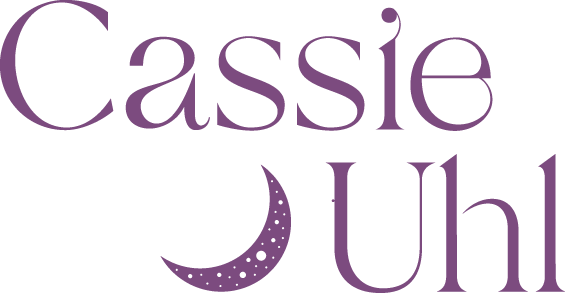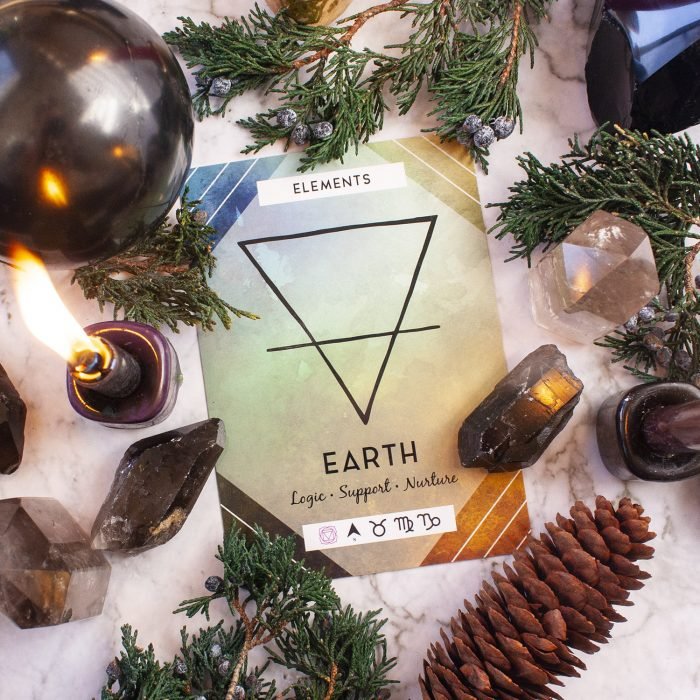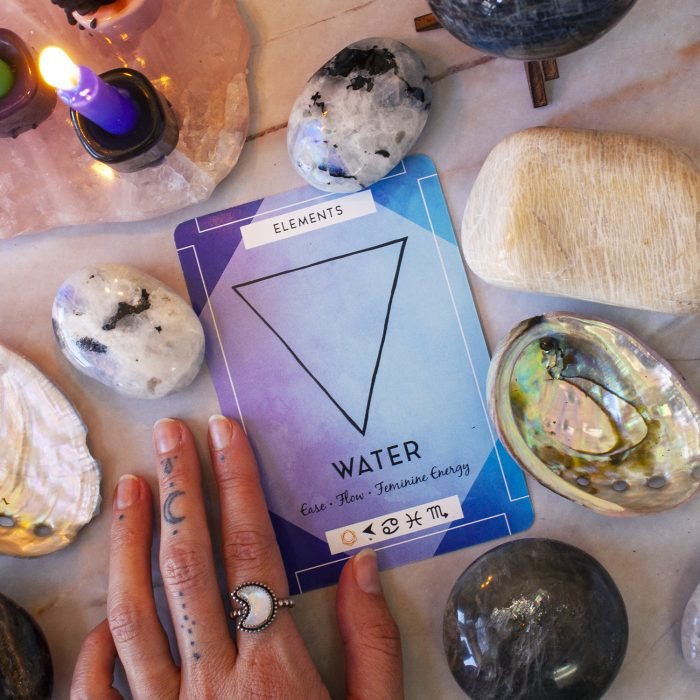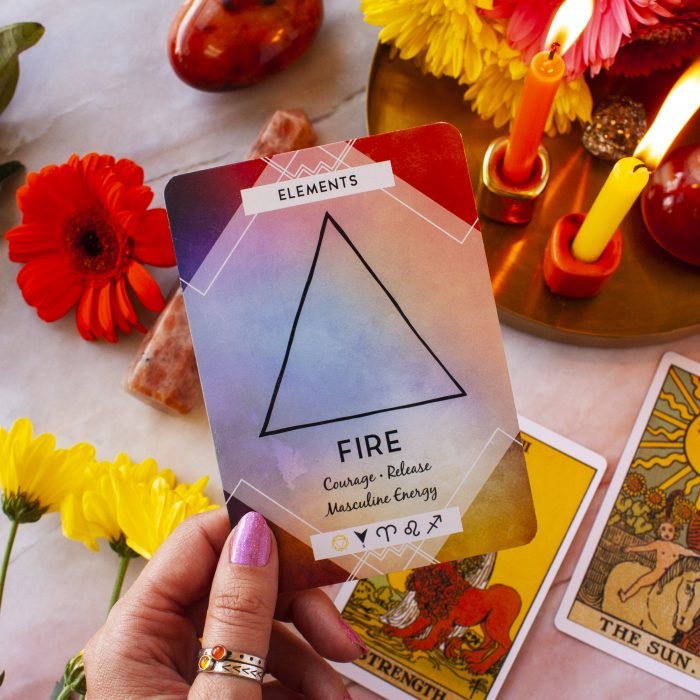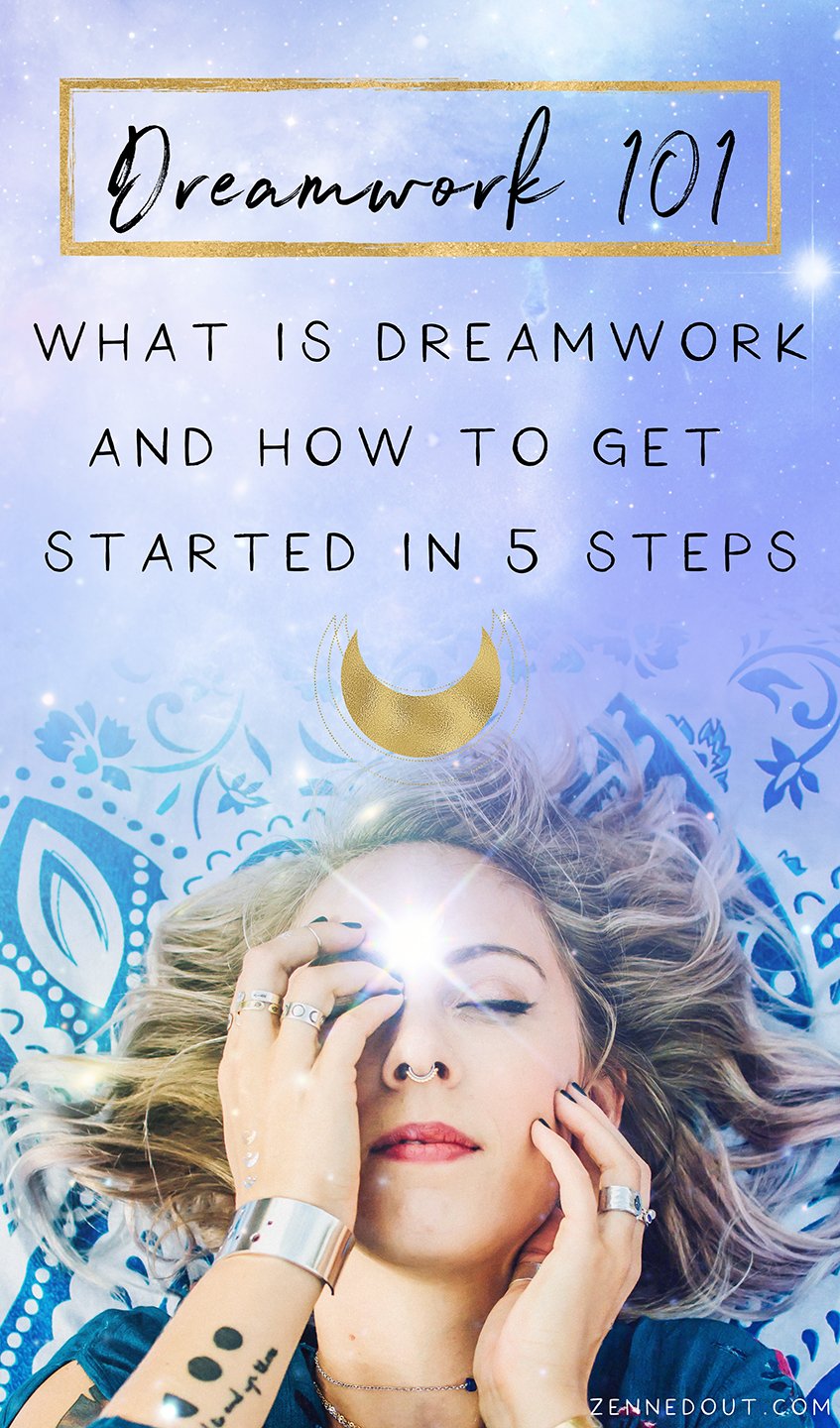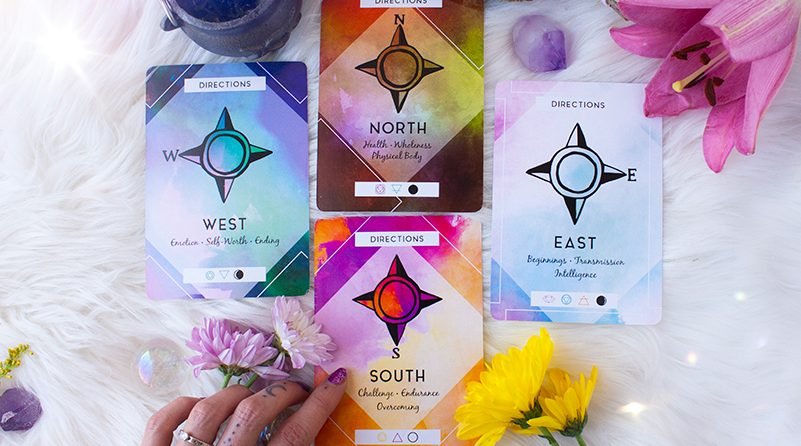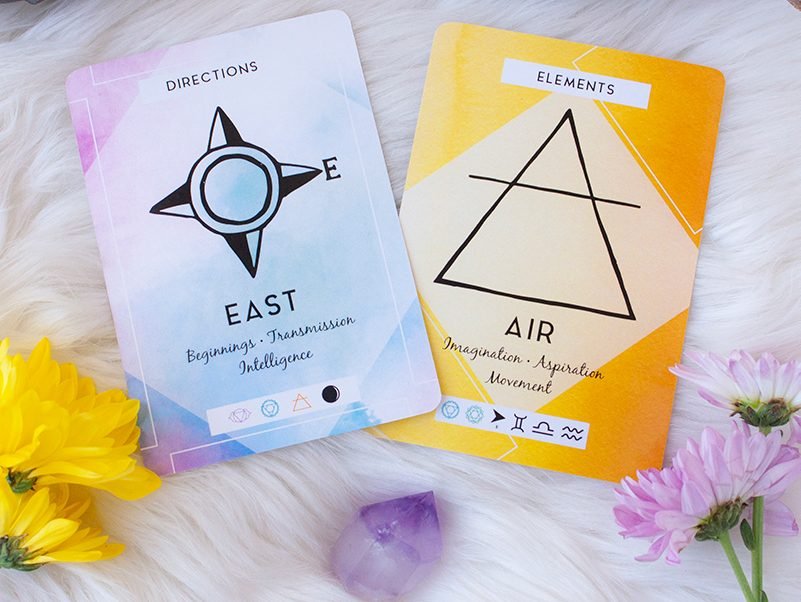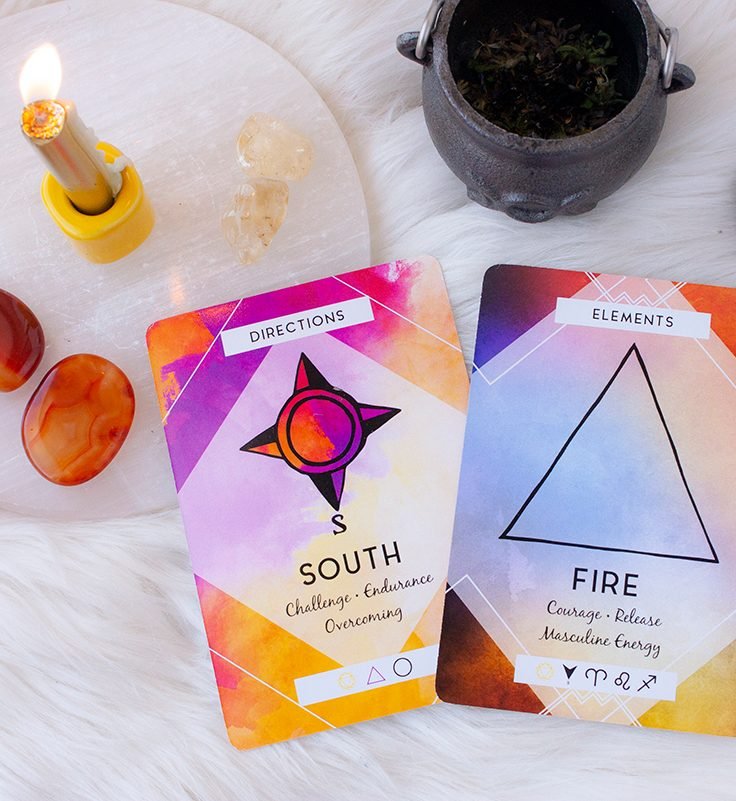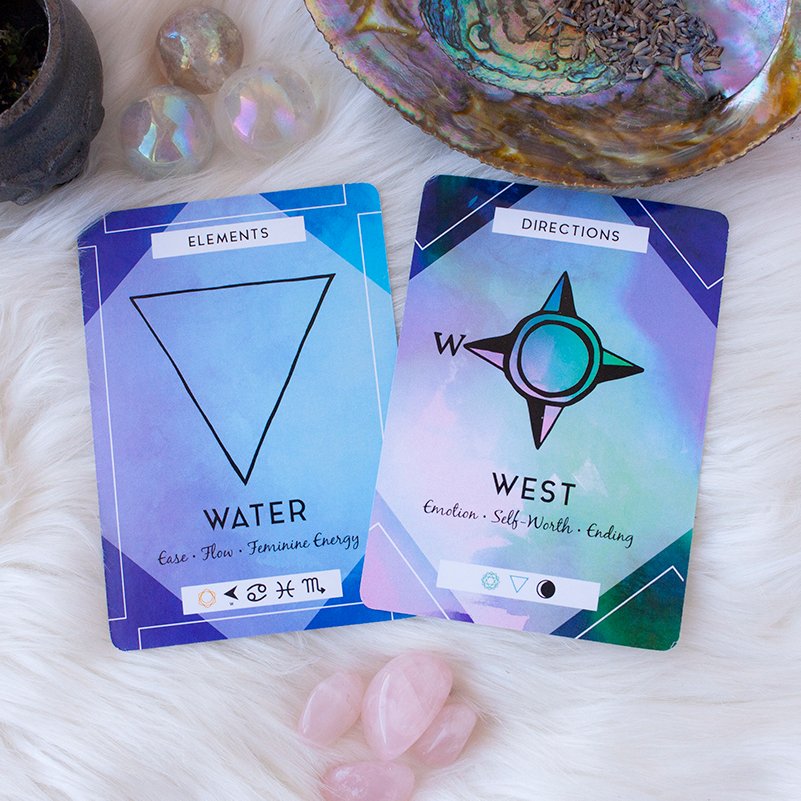Understanding the 4 Elements & Using them to Shift Your Energy
The four elements, earth, air, fire, and water, are physical materials and energies that comprise the world around us. If you don't already work with the four elements in your practice, you've likely heard of them because they're rather tricky to avoid as so many spiritual practices refer to them in some way.
The four elements, earth, air, fire, and water, are physical materials and energies that comprise the world around us. If you don't already work with the four elements in your practice, you've likely heard of them because they're rather tricky to avoid as so many spiritual practices refer to them in some way.
There are countless ways to deepen your relationship with the four elements and bring them into your practice. In this post, you'll learn a bit about the history of the four elements, common correspondences for them, how to work with them physically and energetically, calling them in for protection, and using them in your home or on your altar.
I want to quickly touch on the element of Spirit because I'm sure some of you may be wondering if I'll discuss it as well! I will touch on the fifth element, often referred to as Spirit, aether, or Akasha, especially in the history section. However, I will save a deeper dive into the fifth element of Spirit for a post of its own. Much of this share will be dedicated to the four elements as I see them as slightly separate from Spirit and very foundational.
Listen to this post on my podcast, Rooting into Wholeness here.
A brief view of history and the four elements
As usual, I do like to cover some history. I think it's an essential part of having a complete view of different spiritual practices. That said, I always research with an understanding that this history is rarely the whole picture, but rather one piece. This is especially true when you're reconstructing a spiritual path that's not clearly recorded, was attempted to be eradicated, or if you hold multiple cultural heritages (like many of us do!).
The deeper I dive into my spiritual roots, the clearer it becomes that building a meaningful practice combines historical facts, inference, oral traditions passed down, and personal experience. Each of these pieces, in my opinion, serves a useful purpose while building a spiritual practice. Here's a very brief history of some of the earliest mentions of the four elements.
One of the first written examples of the four elements comes from the Greek philosopher Empedocles in the fifth century BCE. Empedocles refers to them as the four roots and assigns each element or "root" to a Greek God or Goddess as follows, Hera with earth, Zeus with air, Aidoneus with fire, and Nestis with water (though there is some debate over this, this is the consensus.) The Gods and Goddesses Empedocles associated with each element is less important (to me) than the fact that he did associate them with Gods and Goddesses. Because Empedocles gave these elements spiritual significance by corresponding each with a God or Goddess, it indicates that he viewed them as having a deeper meaning than mere elements on a periodic table.
In Buddhist practices, we see the first written mention of the four (sometimes five) elements in the Pali Canon in 29 BCE. However, these were recorded based on oral history that had been previously passed down for possibly hundreds of years. We also have Vedic texts that speak to the five elements, or Pancha Bhootas, in Hinduism. These were first recorded in the Taittirīya Upanishad is unknown, but some think it could have been even earlier than Empedocles and predate Buddhist practices at around 500-600 BCE. If you've studied practices that have become more commonplace in the West, like Yoga or Ayurveda, these are the elements referred to in these practices.
In all of these cases, I'm simply talking about the written records. I believe, as do others, that the four elements have been worked with and used by many pagan and indigenous practices long before the written evidence was created.
As far as Celtic practices, the four elements were likely not a part of their practice. The number three was sacred to the Celts, so the elements they honored were the land, sea, and sky, or earth, water, and air. In witchcraft and other earth-based practices, the four elements became much more commonplace with the introduction of Wicca in the 1970s, which relies heavily on the four elements (sometimes five.)
Explore The Soul Discovery Journal for more on the elements
There's certainly reference to working with the four elements in pagan, shamanic, and indigenous practices worldwide. However, many of these practices have been passed down orally.
Elen Sentier teaches and practices British Shamanism, or the "old ways," as she calls it, shares about the four elements concerning the world tree. She explains this below, in this excerpt from her book, Following the Deer Trods.
"The World Tree holds the vertical axis on which the three worlds spin (Upperworld, Middleworld, and Lowerworld.) The vertical axis is like the warp-threads in weaving; these are threads on which the pattern is woven. Middleworld holds the horizontal axis of the four elements. These are the weft threads that weave the pattern of life.
The four elements - earth, air, fire, water - are the weft-threads.
These two, the warp and the weft, are the basis of the duality which enables life to be."
This explanation from Elen Sentier is hardly the only reference to the four elements in earth-based spiritual practices. I'm confident that wherever your cultural roots lie, you will be able to find reference to three, four, or five elements there as well. This is where inference and personal experience come in. When we examine the written history, we have one piece of the puzzle; however, when we explore the personal experiences from those who've lived and experienced lines of knowledge passed down, we receive a different part of the puzzle. For example, even though I walk a Celtic and British path primarily, I choose to work with the four elements because they have been an integral part of my practice, through my introduction to them with Yogic philosophy but in my witchcraft and shamanic work as well.
As always, work with what speaks to you, your experiences, and your heritage. Perhaps you prefer to work with three, four, or five elements. There are seeds of truth and wisdom in all of them.
For this post, I will be focusing on the four elements through my unique lens of witchcraft and British earth-based spiritual practices. However, my introduction to the four elements was through my Yoga teacher training in 2012, which will color my unique lens.
The elements and correspondences
Each element has a unique essence, which carries both positive and shadow attributes. No element is positive or negative, but rather a conglomerate of different energies. For example, we can see the soft and gentle flame of a candle or a roaring forest fire. Each has value and purpose. Each element also relates to a host of other energies and objects, called correspondences. Correspondences are energies that match and play well together.
Once you understand how the four elements relate to other energies, it creates a strong foundation for understanding magical correspondences on a broader level. Explore an in depth exploration of the four directions and elements by journeying to them here.
Keep in mind. These are my beliefs based on my research and experiences. If something I share about an element doesn't fit into your practice or even goes directly against your practice, no worries, just leave it. As we already discussed in the history section, spiritual practices using the four elements span the globe, so differing opinions are bound to come about.
Air card from The Ritual Deck.
Let's go through each element and discuss some of the most common meanings and correspondences for them.
Air relates to intellect, ideas, inspiration, and the mind. It corresponds with the East, the color yellow, the suit of swords in the tarot, the throat and heart space, wind, sound, smoke, smells, feathers, birds, and unseeable forces that influence our minds. In astrology, the three air signs are Gemini, Libra, and Aquarius.
Fire relates to transformation, action, power, and the ego. It corresponds with the South, the color red, the suit of wands in the tarot, the solar plexus area, flames, heat, candles, the phoenix, dance, and the destructive forces that ultimately encourage new growth. In astrology, the three fire signs are Aries, Leo, and Sagittarius.
Water relates to emotions, intuition, feelings, and the subconscious mind. It corresponds with the West, the color blue, the suit of cups in the tarot, the sacral area, springs, the ocean, tears, shells, aquatic animals, things in a liquid state like melting wax, and the forces that move us to feel so we can cleanse and heal. In astrology, the three water signs are Cancer, Scorpio, and Pisces.
Earth relates to safety, protection, the material world, and the physical body. It corresponds with the North, the color green, the root space, dirt, trees, rocks, food, bones, ancestral wisdom, and the physical energies that support and sustain us. In astrology, the three earth signs are Taurus, Virgo, and Capricorn.
I discuss this a lot in my Tarot Correspondences course and my new book, Understanding Tarot. As you can see, once you have a firm understanding of each of the elements, it will help you better understand Astrology, Tarot, and a host of other magickal practices.
This is a peek into each element. We'll go deeper into each of these, their positive and shadow sides, different tools to connect with them, and wisdom from each in the following posts:
Let's move on to some ways to begin working with the four elements collectively.
Connecting with the elements in the physical and energy body
As Elen Sentier stated in the excerpt from her book above, the four elements are the "weft threads that weave the pattern of life." The four elements affect each of us physically and energetically here in physical form. We can feel them in the body and connect with them in the subtle body.
If you want to form a deeper relationship with the four elements, this is where I'd invite you to begin, connecting with them within your body. There are many ways to start doing this, and it will be an ongoing practice because our relationship with the elements is not fixed and is constantly evolving and growing.
Earth card from The Ritual Deck.
Here are three ways I've learned to deepen my relationship with the four elements.
1. Notice the elements in the natural world and when you do, notice how they make you feel. For example, When I go on my regular walking meditations outside, this is one way that I tune in to the environment and the elements. I notice how the sun's heat feels on my skin. I notice the wind and any sounds it may be creating in the trees. I notice any water (which here in the desert is usually just the dew on the grass leftover from sprinklers). I notice the supportive earth beneath my feet. You can even imagine this in your mind right now. What feelings come up within you when you think about a stream vs. a fire? Each brings a different energy that is palpable within my mind's eye.
2. Notice how the four elements come up within your physical body. When you experience different sensations in your body, can you associate them with a specific element? For example, I'm someone who becomes ungrounded and anxious easily. I know what anxiety and dysregulation in my nervous system feel like. My mind races, I get a tingling sensation in my neck, my hands and feet sometimes get tingly, and my breath becomes shorter and moves to the chest. These sensations can come up due to an event outside of me or me merely not making time to care for my body, mind, and Spirit.
For me, I recognize this as an overabundance of air. Air corresponds with the thinking mind, intellect, and ideas. When I'm stuck in my head, and it's literally pulling me out of my body, I know I need to ground and bring in more earth. If I find myself in this place, I make sure to do things that bring in more of the earth element, like getting outside and feeling the support of the earth below my feet, or perhaps I meditate and visualize a connection to the earth. This is why my regular walking meditation practice is so imperative for me. Of course, this is not a cure-all nor an excuse to not seek out professional help. I've also relied on therapy and medication for my anxiety at different times in my life, but I find that a daily practice such as this helps support me in different ways.
Can you bring to mind some common emotions or sensations in your body? Perhaps you lean towards too much earth and often feel sluggish, tired, or heavy? Or, too much water, and you find yourself overly emotional and often in a puddle of tears. Or too much fire, which could feel like a need to be forceful or constantly doing. As I mentioned, each element is neither good nor bad. They each have both positive and shadow sides to work with and recognize. It's in finding a balance between them that we can move towards more equilibrium.
Water card from The Ritual Deck.
3. There are also ways to work with the elements on an energetic level. This is great if you don't have access to elements you want to work with or do some healing work during meditation or journeying.
I rely heavily on the four elements while working alongside clients for energy work. I see each element as an ally or helping Spirit to aid in giving each client what they need for healing. Of course, there are so many ways to do this for yourself as well. Here are some ways that I've learned over the years to work with each element energetically.
For earth, one of my favorite grounding techniques is to imagine that beam of energy or even a root coming from the base of your spine and connecting with the energy of earth (you can do this outside for extra potent earth energy!) In energy work, I will often pull in earth and mud (energetically within my altered state of performing energy work) to place on top of people if their energy feels dysregulated or "buzzy."
For air, I visualize air blowing around me and through my body. When performing energy work, I will sometimes blow air into certain parts of the body to clear or bring in more air. I also work with feathers similarly.
For water, I love to visit and visualize sacred springs and work with the water for healing for myself or with my clients. Spring waters are one of the most common tools, next to earth, that I pour into parts of people's bodies to bring cleansing and healing.
For fire, I love dance, either physically or even visualizing it. I'll imagine certain issues or things being burned up within me. I'm cautious with fire for energy work as it's so intense, so it's something I don't often use unless someone is very low energy.
I encourage you to explore your relationship with each element through meditation or journey work to find ways to work with them that work for you.
I hope this gives you some guidance to begin working with the elements both physically and energetically. As I mentioned, I will dedicate a post to each of these elements to explore each one on a deeper level.
Spellwork and Protection with the Elements
The four elements are often used in both spellwork and protection. Let's discuss some ways to work with them in these ways. As we discussed, each element carries specific energy, and you can call upon those energies through the elements to better facilitate particular outcomes in spellwork.
Fire card from The Ritual Deck.
Here are examples for each element. If you are conducting a spell to bring in mental clarity, the element of air would be appropriate, and you may want to incorporate feathers or plants that blow in the wind to honor air. Fire is your friend, and candle spellwork would be ideal if you are conducting a spell to energize you or facilitate a transformation. If you are performing spellwork to connect with your intuitive mind, bring some water into your spell by implementing water, shells, or aquatic materials. If you're working on manifesting something physical into your life, call upon the element of earth by working with stones, crystals, or earth objects to help bring about material possession.
There are so many different items that correspond with each element, so you truly have a bounty of various tools when it comes to representing the elements in your spellwork. You could rely on different tarot cards, plants, crystals, Gods, Goddesses, etc., to bring in an element. If you're learning the correspondences for the elements, I designed my oracle card deck, The Ritual Deck, to be a learning tool specifically for this! Each card has a correspondence bar at the bottom that shows the corresponding element for each card/symbol. Beyond this deck, I also love "Llewellyn's Complete Correspondence Guide." It's a big book but one I think any witch or person who dabbles in spellwork should have!
When it comes to protection, I love working with the four elements! If you've ever had a session with me, you know that I begin each session with some drumming and invoke each of the four elements to create a sacred container for our work. I also do this mentally whenever I journey. In Wicca, this is often referred to as "Calling the Quarters." But, you certainly do not need to consider yourself a Wiccan to work with the elements in this way. Working with the elements in this way for protection is something we see in many earth-based and shamanic practices.
To work with the elements in this way for protection, you can call in each element aloud or in your mind. It's common to start at the East with air, and move clockwise around the directions, Fire of the South, Water of the West, and Earth of the North. I like to visualize each element swooping in to create a barrier around me as I work. You could also place a physical representation of each element around you in this same order.
In witchcraft, this is often referred to as casting a circle. However, there are many other ways to cast a circle, and you do not have to consider yourself a witch to use the elements in this way. The next time you feel like you need extra protection for spellwork, meditating, journeying, etc. I encourage you to try either of these techniques and notice how you feel.
Using the four elements on altars and living spaces
One of the most common ways people work the elements into their practice is through an altar. This is another tool that we can see across cultures and traditions. It's a widespread practice to represent all four elements present on an altar for balance, protection and to show gratitude for each of the elements. We've touched on this a bit, but I'll share here some suggestions for ways to represent each element on your altar.
Air: Feathers, images or sculptures of birds or flying insects, smoke, fans, herbs or plants that blow in the wind, any cards from the suit of swords in the tarot, the color yellow, labradorite, amethyst, musical instruments like singing bowls, chimes, rattles, drums, etc.
Fire: Candles, burning charcoal, burning herbs, incense, lava rocks, obsidian, yellow jasper, any cards from the suit of wands in the tarot, a wand, phallic symbols, symbols, or images of the God (could be any God you're comfortable with.)
Water: water, shells, images or sculptures of any aquatic animals, opal, moonstone, aquamarine, any cards from the suit of cups in the tarot, chalices, cauldrons, symbols of the Goddess (could be any Goddess you're comfortable with.)
Earth: stones, wood, plant material, living plants, herbs, symbols or sculptures of trees, petrified wood, the Greenman, Gaia (or any earth God or Goddess in your practice), any card from the suit of pentacles in the tarot, money, different metals.
Some unique items can serve as all four (or five) of the elements.
Smoke cleansing with a shell or chalice-shaped bowl can serve as a representation of all four elements. The shell or chalice shape represents water, the plant material represents earth, the burning herbs represent fire, and the smoke represents air.
Candles are another one. The flame represents fire, the smoke represents air, the wick represents earth, and the melting wax represents water. I'm sure there are others that I'm not aware of or familiar with!
You can modify these same suggestions for your altar to help balance the energy of your living space. For example, if you're going through a transition as a family unit, you may find it helpful to bring in some grounding elements to your home to offer you and your family a greater sense of safety and support. Alternatively, suppose you recently had a visitor in your home who left some unwelcome residual energy. In that case, you might benefit from bringing more of the air element through smoke cleansing, or simply opening the windows, to bring in an energetic fresh breeze, if you will.
As you can see, there are so many meaningful and important ways to work with the four elements in your spiritual practice!
I'd like to note one last thing, especially when discussing using items from the natural world, both physically and energetically, is to be reciprocal with these elemental energies. When you call on them, thank them for their assistance by taking a few quiet breaths and offering your thanks and gratitude. If you take items from nature, consider leaving an offering as a token of your appreciation. This can be simple, but it's important and can genuinely help you form a much deeper relationship with the elements and nature.
If you enjoyed this share, I invite you to share it with someone else who may enjoy it as well. I'm excited to do deep dives into each of the elements soon!
In love and gratitude, Cassie
Dreamwork 101 // What is Dreamwork and How to Get Started in 5 Steps
Dreamwork is the practice of tending to our relationship with our dreams. We’re dreaming every night, but many of us barely remember our dreams, or if we do, don’t spend much time thinking about them or working with them.(How often have you dismissed a dream as, “oh, it was just a dream?”)
Dreamwork is the practice of tending to our relationship with our dreams. We’re dreaming every night, but many of us barely remember our dreams, or if we do, don’t spend much time thinking about them or working with them.
(How often have you dismissed a dream as, “oh, it was just a dream?”)
But dreams can have a lot to teach us and offer us when we enter into a deeper relationship with them. The dreamworld is rich with feelings, desires, needs, and possibilities. Our understanding of what the dreamworld evokes and presents can support our physical lives and our connections to ourselves.
In this blog post, I’ll share a bit about how to start a dreamwork practice of your own.
Dreamwork Lineage
First, I’d like to share my dreamwork lineage. What I know about dreamwork comes from the work of these folks in particular, as well as my own intuition and my ancestors:
These are wonderful people to go deeper into dreamwork with if you feel so called.
1. Support Dream Recall + Sleep
The simplest of ways to begin supporting your dreaming is by supporting sleep and dream recall. It’s difficult to consciously work with our dreams if we’re not sleeping well or can’t remember our dreams when we wake up. Everyone is different, but here are some things you might like to explore to support your sleep:
Set screen time boundaries for a certain amount of time before bed
Drink a tea to support your sleep, like chamomile (always do your own research and check with a professional before ingesting herbs)
Create your own sleep ritual that helps you shift into rest mode
Meditate and/or do a gentle, restorative yoga practice
Take a few minutes to journal brain-dump style to help clear your mind.
To support your dream recall, there are a few things I find helpful:
Set an intention to dream and to remember your dream(s) before you go to sleep (you can write this down, say it out loud, or just tell it to yourself silently)
Take a few minutes in bed in the morning before you get out of bed (or look at your phone) to give yourself space to remember your dream.
Create a dream altar and meditate at it before bed to welcome your dreams to come
Pay attention to the dreams you do receive by tending them (more on that below!)
2. Start a Dream Journal
This is probably the number one tip anyone you ask about dreamwork will give you, and with good reason! A dream journal creates a container for tending your dreams, helps solidify your intention to connect with your dreams, and helps you understand your dreams.
I recommend choosing a dedicated journal for your dreamwork and placing it on your dream altar when you’re not using it if you have one. As soon as you wake up (definitely before you look at any devices), put pen to paper and record your dream. Try recording your dreams in the present tense to honor its aliveness (for example, instead of "I was walking by a river,” try “I’m walking by a river).
If it feels available to you, you might like to marinate in the dream in bed for a few minutes before actually getting up and reaching for your journal to record.
3. Explore Dream Feelings & Textures
After you record your dream, there are many ways to work with it more deeply and explore the messages it might have for you.
I like to explore the dream textures: what are the textures, sights, smells, tastes, sounds of the dream? What do those senses mean for you and evoke for you? How do they make you feel? How does the dream, in general, make you feel?
4. Understand Dream Associations
As you work with the dream you’ve recorded, notice what stands out to you. Maybe your red dress feels particularly alive, or the hawk sparks something for you, or you feel curious about a figure in your dream.
Whatever you feel curious about, do a bit of freewriting about it. List out: what does this thing make you think of? How does it make you feel?
For example, some associations that come up with hawks for me:
Hawk feather
Maggie Smith’s poetry book Good Bones
Mothers
Protecting your children
Imagination
Play
Notice how I’m not so focused on the hawk itself, but I follow the threads of what each thing is associated with! Now I have something interesting to work with and can ask myself questions like, "what’s my relationship with play right now?"
Some of the associations you make might really surprise you and can offer deeper insight into your dream.
5. Assign Dream Correspondences
As you continue to work with your dreams, you start to develop some personal symbols and correspondences.
Like you saw above in my example with the hawk, I could make a section in my journal where I note that hawk led me to mothers and children and play. When I see a hawk again in my dream, I have that reference and can ask myself if/how it applies to this dream.
Over time, you can deepen your understanding of your own personal dream symbols and correspondences. I love this practice so much because, to me, it’s not about what a certain symbol means but about what it means to you, how it feels in your body, how it resonates with your ancestry. That’s what feels potent and powerful!
Dreams Aren’t Your Personal Vending Machine
It feels important to state that working with dreams isn’t just asking a question and receiving an answer. Generally, it’s not a simple or linear way of working. There isn’t one true or hidden meaning that we need to uncover.
In my eyes, dreams and the dreamworld are alive. So it truly is a practice of engaging in relationship with, of exploring. You might like to ask yourself, "how can I be in equal exchange with my dreams?" How can I honor the dream world and not just extract from it?
Dreams have such potential to expand us out of binary thinking and into visionary possibilities, especially if we acknowledge that power and allow them to take us there!
Going Deeper with Your Dreams
Another way to explore dream tending and go a bit deeper is by asking for a dream. I share how to do this in the dreamwork ritual I shared for Pisces season, which you can find here.
Feel free to contact us and share: how is your dream practice going? How is your relationship with your dreams evolving?
Dreamwork Ritual for Pisces Season + Card Spread
Pisces, our mutable water sign and last sign of the zodiac, evokes the artist, the mystic, the dreamer, in all of us with its connection to music, poetry, spirituality, and the dream world.In this blog post, I’ll be sharing a card spread and a ritual for Pisces season.
3 Simple Protection Rituals
Those of us who are energetically sensitive, connected to the spirit realm, or in a process of opening up our psychic abilities may find ourselves feeling drained or sometimes connecting with negative, unwelcome energy. That’s where protection rituals come in, to help protect us from unwanted energies and spirits.This time of the year when the veil between the physical world and the spirit world is the thinnest is ideal for all of us to do protection rituals!I’ve got you covered in this blog. Keep scrolling to find three rituals for protection.
Those of us who are energetically sensitive, connected to the spirit realm, or in a process of opening up our psychic abilities may find ourselves feeling drained or sometimes connecting with negative, unwelcome energy. That’s where protection rituals come in, to help protect us from unwanted energies and spirits.
This time of the year when the veil between the physical world and the spirit world is the thinnest is ideal for all of us to do protection rituals!
I’ve got you covered in this blog. Keep scrolling to find three rituals for protection.
ANCESTORS + GUIDES PROTECTION RITUAL
This protection ritual is intended to help you call on the protection and guidance of your spiritual support team: your well ancestors, spirit guides, angels, and any other energies who have your highest and best interests at heart. You’ll need:
A black candle
Rosemary
Bergamot oil or a simple oil like grapeseed
Before you begin, prep your candle. Cover your candle in oil and roll it in a mixture of salt and rosemary. Then, start your ritual by grounding yourself and casting your circle. Sit in meditation, focusing on your breath, or do a little breathwork to bring yourself into a clear, open, receptive state.
When you feel ready, light your candle. Speak aloud and ask these spirits and energies, one at a time, to join your circle:
Well ancestors from your mother’s lineages
Well ancestors from your father’s lineages
Spirit guides
Angels
Any other helpful beings who have your highest and best at heart
When you feel them arrive, thank them. Ask them to protect you, ask them if they have any messages you need to receive right now and ask them if they have a symbol of protection to offer you. Take as long as you’d like here, breathing and listening.
Ask these helpful beings what you can offer them as thanks for their protection. Maybe it’s a sweet treat, some wine, a prayer, or a song. If it’s a physical offering and you have what you need, gather the offering and place it on your altar. If not, return to your altar tomorrow with the offering. If it’s something like a prayer or a song, offer it to them.
Thank your ancestors and guides for their help and let them go as you let your candle burn all the way down. Begin working with the protection symbol offered by these helpful beings in whatever ways feel right to you. Maybe you paint it and hang it in your space, write it in your journal, carve it into candles, customize it as a necklace, or invoke it in future rituals.
CHARM BAG FOR PROTECTION
If you’ve been reading the blog for a while, you know I love charm or spell bags! Here’s what you’ll need:
A small bag (If you want to use a colored bag, opt for black)
Yarrow or rosemary
Smoky quartz, black tourmaline, or malachite
Kundalini protection mantra Aad Guray Nameh
Symbols: Hamsa Hand, Eye of Horus, a pentacle, crossed spears, and/or any other personal symbol of protection
Gather your items and ground yourself. Place each item in your bag one by one, visualizing protective energy pouring into your bag and swirling around you, creating a flexible bubble of protection that only allows in the most loving, helpful energies.
Once each item is in the bag, I recommend placing your hands on the bag and chanting the mantra Aad Guray Nameh until you feel complete. You know your bag is ready when you feel an energy shift. Carry the bag with you as you move through your day or place it by your bed for protection as you sleep.
SALT BATH RITUAL FOR PROTECTION
Salt has long been known to have powerful protective energy. For this simple salt bath ritual, you’ll need:
Pure salt
A black pillar candle
Optional: yarrow or another favorite protection herb
Start running your bathwater. As the tub fills, sit in meditation to ground yourself and create an internal ritual space. A few deep belly breaths in through the nose and out through the mouth is a beautiful way to ground and come into your body.
When you feel grounded, add the salt and herbs if you’re using them to your bath. Sprinkle a little salt and any other herbs you’re using into the top of the black candle and light it near your bath.
Spend time meditating in your bath, invoking the four elements and any other protective energies you connect with to surround you, support you, and help you. Stay present and really feel how it feels to be surrounded by loving energy. Ask the elements to create a protective field around you as you emerge from the bath, keeping any harmful energies and spirits away.
To complete the ritual, light your pillar candle every day for the next 3 days until it burns all the way down.
The Witch’s Herb // 3 Magickal Uses for Mugwort
Mugwort, or Artemisia vulgaris, is touted as the witch’s herb. Mugwort is a powerful plant that every witch should have in their arsenal, but the richness of its history goes far beyond the witch. Mugwort is viewed as a weed and a nuisance by some, but don’t let this plant fool you, it’s powerful and potent!Mugwort has been used for thousands of years and has a multitude of purposes, including ancient beer production, acupuncture, and protection rituals, to name a few. I’ll be focusing on ways to use Mugwort in your spiritual and magickal practice. Keep scrolling for four ways to use Mugwort.
Mugwort, or Artemisia vulgaris, is touted as the witch’s herb. Mugwort is a powerful plant that every witch should have in their arsenal, but the richness of its history goes far beyond the witch. Mugwort is viewed as a weed and a nuisance by some, but don’t let this plant fool you, it’s powerful and potent!
Mugwort has been used for thousands of years and has a multitude of purposes, including ancient beer production, acupuncture, and protection rituals, to name a few. I’ll be focusing on ways to use Mugwort in your spiritual and magickal practice. Keep scrolling for four ways to use Mugwort.
Oracle card featured from The Ritual Deck.
Space Cleansing with Mugwort
There’s been a spotlight on the overharvesting of other plants commonly used in magickal and spiritual practices like white sage and palo santo. There’s undoubtedly some truth to these claims, and white sage and Palo Santo are not always the best option. If you do feel uneasy about using white sage and Palo Santo, or simply want an alternative, Mugwort is a pleasant and powerful option.
Similar to white sage, mugwort is an antimicrobial that can be used to purify the air of your space. Science has caught up with what many of our ancestors already knew, herbal smoke of certain antimicrobial plants can kill bacteria, and mugwort is one of them!
Mugwort has a light, earthy, and slightly sweet aroma. Many prefer it to white sage, myself included. To burn mugwort for energy cleansing you’ll need dried mugwort that’s either loose or in stick form. Use mugwort smoke to cleanse your space by wafting the smoke around with your hand or a large feather.
Beyond cleansing the air of your space, burning mugwort will offer protection and enhance your intuition. Keep reading for more about using mugwort for protection and intuition.
Protection with Mugwort
It’s quite astonishing how many cultures have relied on Mugwort as a protective tool. Native American cultures have used mugwort as a form of protection against ghosts, and as an amulet during sleep to protect against nightmares. In China, mugwort was used to dispel evil spirits during the Dragon Festival. There’s even a reference to St. John the Baptist wearing a wreath of mugwort as protection against evil spirits. In Europe, mugwort was often planted around houses as a form of protection.
Here’s a list of ways to employ the protective benefits of mugwort in your practice:
Burn dried mugwort in loose or stick form to cleanse and protect your space before performing psychic and intuitive work.
Hang mugwort above doorways to prevent negativity from entering.
Plant mugwort around your house for external protection. Be careful, this plant is invasive and can spread quickly!
Make a satchel of dried mugwort to carry with you for protection on the go.
Magick & Psychic Work with Mugwort
Mugwort is associated with the Goddess Artemis and the moon. These lunar ties give mugwort a strong connection to femininity, psychic work, and all things sleep-related. Another reason for using mugwort while practicing psychic work is how protective it is. Performing psychic work makes you vulnerable to psychic attacks and other negative energies. The protective properties of mugwort are another likely reason it became such a popular tool for witches.
Oracle cards featured from The Ritual Deck.
Here are some ways to use mugwort as a magickal tool:
The next time you’re doing a card reading or any other intuitive work, aid your intuition by burning some mugwort or drinking a cup of mugwort tea before you begin your practice. Note: Pregnant or nursing women should not consume mugwort.
To enhance your dreams, receive messages in your dreams, and practice lucid dreaming, place a pillow of dried mugwort under your pillow as you sleep.
Create a psychic protection charm bag.
Steep mugwort in a bowl of water to use as cleansing water for your psychic tools, only the ones that can get wet, of course! This is a great option for crystal balls, pendulums, and mirrors used for scrying.
If you have access to mugwort plants, their stalks are hearty and make beautiful wands for circle casting and spellwork.
Mugwort is associated with the crone phase of the Triple Goddess and is an excellent plant to work with when working with this energy.
Mugwort has been revered for its medicinal uses as well, especially in women, but that’s a post for another day! If you want to learn more about mugwort, I encourage you to continue to research it, and there’s much to gain from this magickal plant.
Using the Cardinal Directions in Ritual
The cardinal directions, North, South, East, and West, can help you with more than navigation. Each direction holds a meaning of its own and corresponds to one of the four elements. There are both simple and complex ways of using the cardinal directions in ritual.A variety of cultures honor the cardinal directions. This article is looking at them from a Pagan and Wiccan perspective. The four directions are often used by Native Americans on the medicine wheel. Neither way is wrong or right, just different, and for different purposes.Read on for meanings and three ways to start using the cardinal directions in your magickal practices.
The cardinal directions, North, South, East, and West, can help you with more than navigation. Each direction holds a meaning of its own and corresponds to one of the four elements. There are both simple and complex ways of using the cardinal directions in ritual.
A variety of cultures honor the cardinal directions. This article is looking at them from a Pagan and Wiccan perspective. The four directions are often used by Native Americans on the medicine wheel. Neither way is wrong or right, just different, and for different purposes.
Read on for meanings and three ways to start using the cardinal directions in your magickal practices.
Connection to the Four Elements
Each direction corresponds to one of the four elements; understanding these connections can help you better understand the energy of each direction.
North corresponds to Earth
East corresponds to Air
South corresponds to Fire
West corresponds to Water
A quick note about these correspondences. The elemental correspondences can vary depending on your location, cultural background, or intuition. Catherine Beyer explains this in her article The Five Element Symbols of Fire, Water, Air, Earth, and Spirit.
The Golden Dawn originated in England, and the directional/elemental correspondences reflect a European perspective. To the south are the warmer climates, and thus is associated with fire. The Atlantic Ocean lies to the west. The north is cold and formidable, a land of the earth but sometimes not a lot else.
If these correspondences don’t feel right to you, that’s ok! For example, if you live in the Southern Hemisphere, you may find that the correspondences feel off. You can reassign the elements in a way that feels natural to you or is in better alignment with your cultural background.
Direction meanings
Here’s a more in-depth look at some meanings and correspondences of each direction.
North
Physical body
Health
Chakra: Root
Element: Earth
Color: Green
South
Hardships
Challenges
Willpower
Chakra: Solar Plexus
Element: Fire
Color: Red
Three ways to use the cardinal directions in ritual
1. Add a layer of meaning to your ritual
The easiest way to start implementing the cardinal directions into your magickal practice is by facing the direction that makes the most sense for what you’re doing. This idea can be applied to oracle and tarot card readings, candle magick, ritual, spellwork, meditation, or working with the moon.
Here are a few examples:
Face North if you’re doing a meditation focused on your health.
Face East if you’re performing a card reading for the new moon because the new moon represents new beginnings.
Face South if you’re asking your guides about how to overcome a problem.
Face West if you’re doing a ritual to help you let go of something.
2. Calling the quarters for protection
The next time you’re practicing a ritual or psychic work start by calling on the four directions, this is also referred to as “calling the quarters.” Calling the quarters will bring you protection and the energy of all of the elements during your practice. It’s also said to create a sacred space that is connected to the spirit realm.
There’s more than one way to call the quarters. A quick google search will offer you a variety of options, but here’s one way:
Imagine each direction as a wind that you’re invoking into your space. You can even imagine a specific Goddess or God for each direction. As you call in each direction, stand facing the direction you’re calling in and ask it to join you for your ritual practice. Many like to start by calling in the North winds first because it will keep your ritual grounded. Rotate in a circle, going through each direction, asking it to join you. When you’re done performing your ritual work, release the winds, and thank them for their assistance and protection.
3. Altar placement
Whether you’re creating a new altar or updating your current altar, the direction it’s facing will have an effect on it. Try to place your altar in a direction that matches the season of life you’re in or want to be in.
Has your altar or sacred space been in the same location for a long time? It might be a time to rearrange and face your altar in a direction that’s in better alignment with your life. Check the meanings for the directions above and note which one feels like where you’re at or want to be right now.
